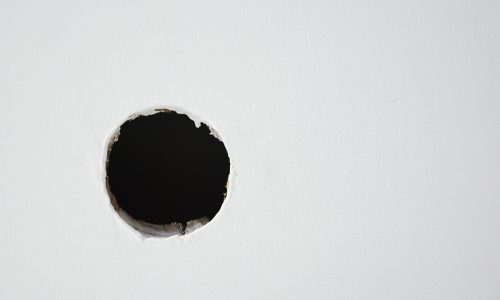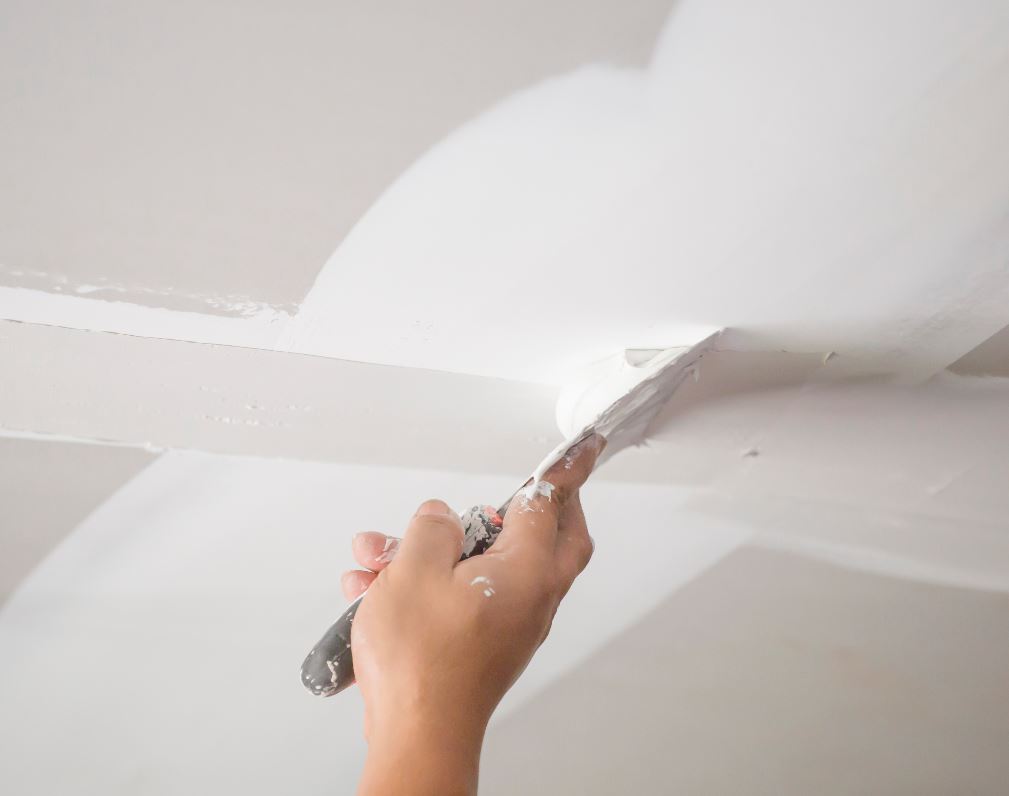Discover the most effective Practices for Effective Drywall Repair Work and Installation
The art of drywall repair service and installation calls for a blend of ability and precision. Mastering the crucial devices is essential for achieving a smooth finish. Recognizing the step-by-step procedure can make a substantial distinction in the outcome. Correct techniques for mudding and taping are likewise crucial. What continues to be is the understanding of maintenance that assures longevity. These components together produce a refined end result worth checking out better.

Vital Devices for Drywall Fixing and Installation
When embarking on drywall fixing and installation, having the right tools can greatly boost the performance and top quality of the job. An energy knife is vital for cutting drywall sheets precisely, while a drywall saw can aid in making a lot more complex cuts. Taping knives, available in different dimensions, are important for applying joint substance smoothly and equally. A drywall sander, ideally with a dirt collection feature, aids attain a refined coating, reducing the demand for extensive cleanup.
Additionally, a determining tape warranties accurate dimensions, and a level ensures that installations are straight and plumb. Safety and security equipment, including dust masks and safety glasses, ought to not be ignored to safeguard versus debris and dust. Lastly, a stud finder aids in finding framing participants, ensuring secure setup. By outfitting oneself with these crucial tools, the repair and installation procedure becomes a lot more manageable and leads to a professional-quality end result.

Step-by-Step Guide to Patching Holes
Patching openings in drywall calls for a methodical technique to ensure a seamless repair work. The area around the opening need to be cleaned and any kind of loosened debris eliminated. For small openings, a putty blade can be used to apply a lightweight spackle, pressing it into the hole and smoothing the surface. After it dries out, sanding is vital to develop a level finish. For bigger openings, a spot of drywall might be required. This entails cutting a piece of drywall a little larger than the hole, securing it to the wall with screws, and using joint compound to cover the joints. As soon as the substance dries out, it should be sanded smooth. Finally, keying the patched location before painting will certainly assure an also surface. Complying with these actions will certainly lead to a professional-looking fixing that mixes flawlessly with the surrounding wall.
Strategies for Seamless Drywall Setup
Attaining seamless drywall setup needs cautious planning and implementation. It is necessary to cut and determine drywall sheets properly to minimize spaces. Using an utility knife, installers must rack up the board prior to snapping it along the cut line, making sure tidy sides. Effectively aligning the sheets is important; beginning from the top and functioning down aids keep uniformity.
Attaching drywall to the studs calls for consistent spacing, typically every 16 inches, utilizing screws as opposed to nails for much better hold. This technique lowers the threat of stands out with time. Additionally, staggering the seams between sheets enhances architectural integrity and decreases the exposure of joints.
Finally, utilizing the ideal density of drywall for particular locations-- such as moisture-resistant key ins shower rooms-- additional adds to a remarkable finish. Following these strategies will certainly cause a professional-looking and smooth installation, setting the stage for the subsequent finishing processes.
Ending Up Touches: Taping and Mudding
Finishing touches, such as mudding and taping, play a necessary function in attaining a polished drywall surface. Insulation involves using a thin strip of drywall tape over the joints and joints, making sure a seamless look. This procedure assists avoid cracks and develops a solid bond in between drywall sheets. It is important to pick the ideal kind of tape, with paper and fiberglass harmonize being one of the most typical alternatives.
Mudding, or using joint substance, adheres to taping. This substance loads in voids and smooths out the surface area for an uniform coating. It is commonly used in several layers, with each coat requiring to dry before sanding. Appropriate technique includes feathering the edges to mix the compound right into the surrounding drywall, decreasing presence.
When completed properly, taping and mudding enhance both the structural and visual honesty of the drywall installation, leading to a professional-quality coating.
Tips for Keeping Your Drywall After Installation

Furthermore, preserving a constant interior moisture degree can avoid warping or mold growth. Using a dehumidifier in wet areas, like cellars, is recommended. It's additionally beneficial to regularly paint areas that reveal wear, as this safeguards the underlying product. When relocating furniture or setting up fixtures, caution should be exercised to stay clear of harming the drywall. By following these upkeep tips, home owners can extend the life of their drywall, securing it stays an attractive function of their insides.
Frequently Asked Inquiries
What Safety And Security Gear Is Needed for Drywall Fixing and Installation?
For drywall repair work and installation, necessary website safety and security gear includes security goggles to secure eyes, dirt masks to avoid inhalation of bits, handwear covers for hand defense, and knee pads for comfort during extended kneeling. Drywall Repair Ogden UT.
How Do I Identify the Drywall Density Needed for My Task?
To determine the drywall thickness required for a task, one should consider the wall's architectural requirements, regional building ordinance, and the meant usage of the room, usually going with 1/2-inch or 5/8-inch drywall.
Can I Fix Drywall Without Removing Furniture From the Space?
Yes, drywall can be repaired without eliminating furnishings from the area. Careful planning and safety measures can decrease mess, permitting effective fixings while maintaining bordering products secure from dirt and damage during the procedure.
What Sorts of Drywall Are Finest for Different Environments?
Moisture-resistant drywall is optimal for kitchen areas and restrooms, while soundproof drywall suits shared wall surfaces in apartment or condos. Fire-rated drywall is best for garages, and common drywall works well generally living locations, making certain durability and viability for different environments.
The length of time Does It Take for Drywall Mud to Dry Entirely?
Drywall mud normally takes 24 to 48 hours to completely dry totally, depending on aspects like humidity and temperature level (drywall contractors). Thicker applications may need longer drying out times, while thinner layers can dry quicker. Appropriate ventilation aids drying out
The art of drywall fixing and installation calls for a blend of skill and precision. When taking on drywall repair work and setup, having the right devices can considerably enhance the effectiveness and top quality of the job. An energy knife is crucial for cutting drywall sheets precisely, while a drywall saw can assist in making more intricate cuts. Achieving seamless drywall installation needs cautious planning and execution. Moisture-resistant drywall is suitable for shower rooms and kitchen areas, while soundproof drywall fits shared wall surfaces in apartments.